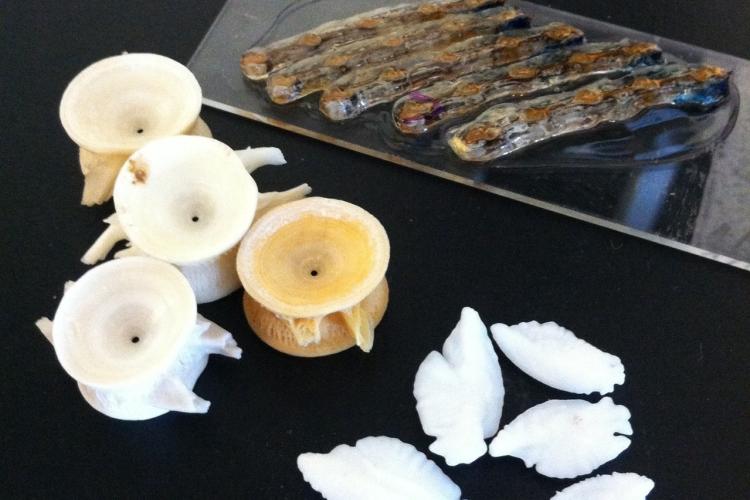Our ageing work is critical in understanding groundfish life-history and tracking population health. By ageing fish, we can calculate fish size-at-age and growth, age-at-maturity, and year-class strength. These calculations are used in stock assessments and help us track populations through time and sustainably manage West Coast fisheries.
What We Do
Ageing Fish
Information on fish's age helps understand the essential aspects of their lives, including their growth and maturity. We determine their ages by counting annual growth rings that accumulate in fishes' ear bones, or otoliths, that can be counted similarly to tree rings. We also find these rings in other hard, calcified structures, such as the spine, vertebrae, or fin ray of certain species.
Prep and ageing methods
There are various methods used to prepare the ageing structures for age reading. The most popular way for ageing fish otoliths is called break and burn. This is where the otolith is broken in half and toasted over a flame. This method makes the growth rings easier to see under a microscope.
For certain species, such as lingcod and spiny dogfish, the prep work is much more involved. Lingcod fin rays are dried, glued to paper, and cut into micro-thin sections on a low speed saw. They are then attached to a microscope slide and sealed in place. They are now ready for ageing.
We collect and freeze spiny dogfish spines in individual plastic bags. We remove the remaining tissue, and then dry and glue the spine slide for ageing.
Where samples come from
We receive samples from many sources in both the commercial and sport fishing industry. Each year many fisheries surveys, federal and state, are tasked with collecting ageing structures for stock assessments and research (see the West Coast Groundfish Bottom Trawl Survey, the Southern California Shelf Rockfish Hook and Line Survey, and Acoustic Hake survey. Fisheries scientists ship these structures to us from all along the West Coast. We prep and age the structures and then return them to the program from which they were received for many scientists and fisheries managers to use.
Age validation and quality assurance
We take pride in producing reliable age information. We use several methods that are tested and validated for accuracy. A second trained specialist reproduces a percentage of all our ages and compares them to reduce age reading error. We also participate in sample exchanges with other West Coast ageing laboratories. Additionally, we are members of the Committee of Ageing Experts (CARE). CARE's mission is a cooperative effort between international, state, and federal fisheries management agencies dedicated to standardizing and improving age determination techniques for Pacific Ocean fish species.
Looking Ahead
Future of Ageing
In the world of ageing, we are always looking for better and faster ways to produce high-quality age data. One method we are excited about is near-infrared spectroscopy.
A beam of near-infrared light is aimed at an otolith; the otolith absorbs some of this light and reflects back a spectrum of information that tells us about the biological and environmental history of a fish. By measuring and comparing these spectrums, we can identify a fish to the species as well as estimate its age. This method is promising; however, it still needs to be validated for accuracy and error.








